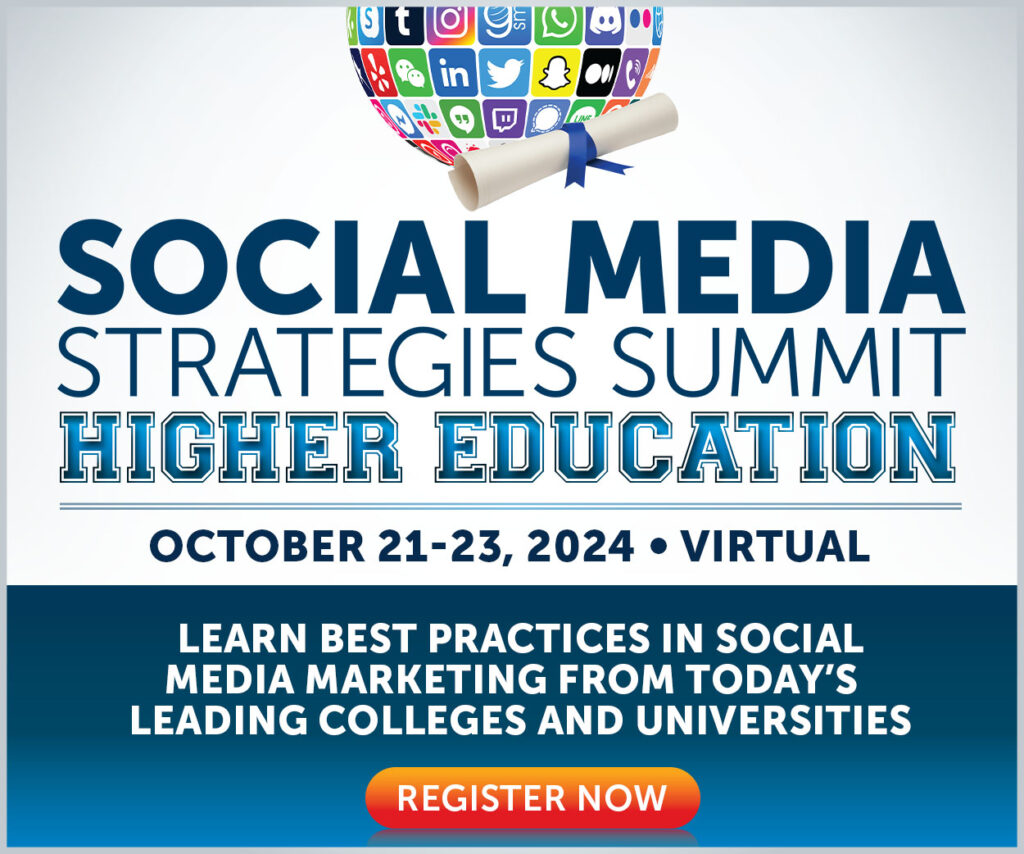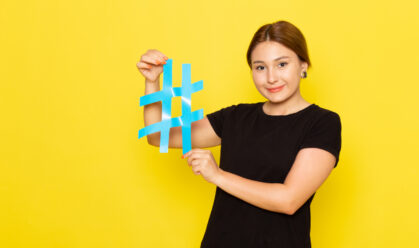Last updated: 2-20-2020
Traditionally, Valentine’s Day has offered a chance for brands to connect with their customers and share in the spirit of love, generosity, and overall appreciation with creative Valentine’s day campaigns. But the public sentiment around Valentine’s Day is shifting and expanding.
According to the National Retail Federation, while Valentine’s Day-related spending is set to reach $20 billion this year, the way we celebrate is changing. Consumers are now more likely to share the holiday with friends, treat themselves to a special outing, or mark the day with the gift of a memorable experience.
As the consumer’s approach to this holiday shifts, brands are responding in new and interesting ways with marketing that reflects the changing times. This year’s top Valentine’s Day campaigns tap into new trends that resonate more than traditional romance and love-filled marketing messages. From celebrating Galentine’s Day to highlighting the unromantic side of the day, brands can use Valentine’s Day to create more authentic connections with their customers.
Here are 10 examples of how brands have tapped into the shifting sentiment around this holiday in the top Valentine’s Day campaigns of 2020.
#1 Twitter Utilizes Tweet Data to Connect with Users
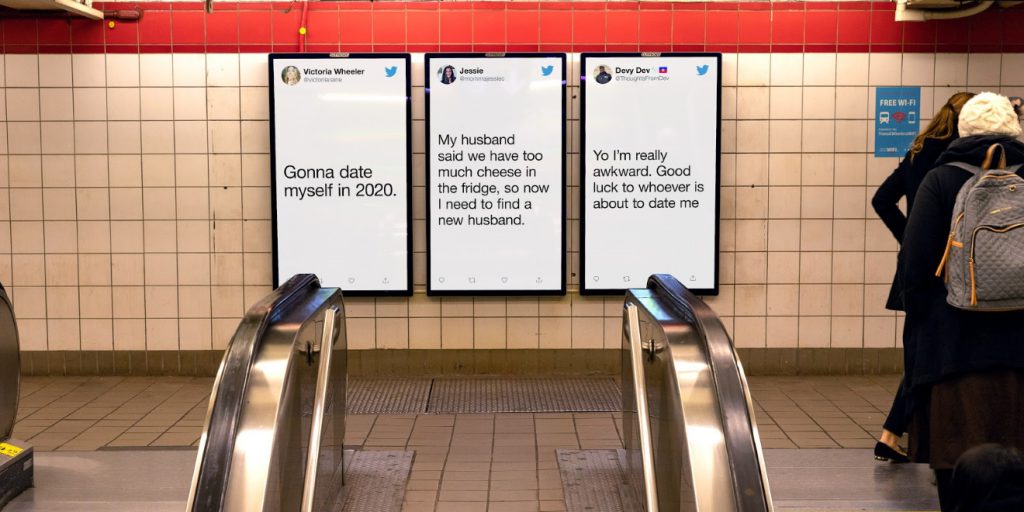
Source: Adweek
Twitter created an outdoor and underground campaign focused on real tweets from users across New York, San Francisco, and Seattle. The goal of the campaign was to bring to light the actual conversations that are happening around Valentine’s Day. The billboards moved beyond commercial messages and unrealistic expectations around Valentine’s Day by tapping into data from Twitter users and mining tweets for trending topics, like “cuffing season” and “ghosting,” to determine which tweets to share and highlight on their campaign billboards.
According to Twitter, tweets about “sliding into DMs” are up 25% from 2016, “first date” is the subject of the most tweets on Thursdays and Fridays, and users tweet about “getting engaged” more in December than any other month. By utilizing their own data, Twitter was able to build a simple, yet effective, Valentine’s Day campaign that resonated with people across these three cities.
#2 Farmgirl Flowers Optimizes Ad Spend Based on Customer Preferences
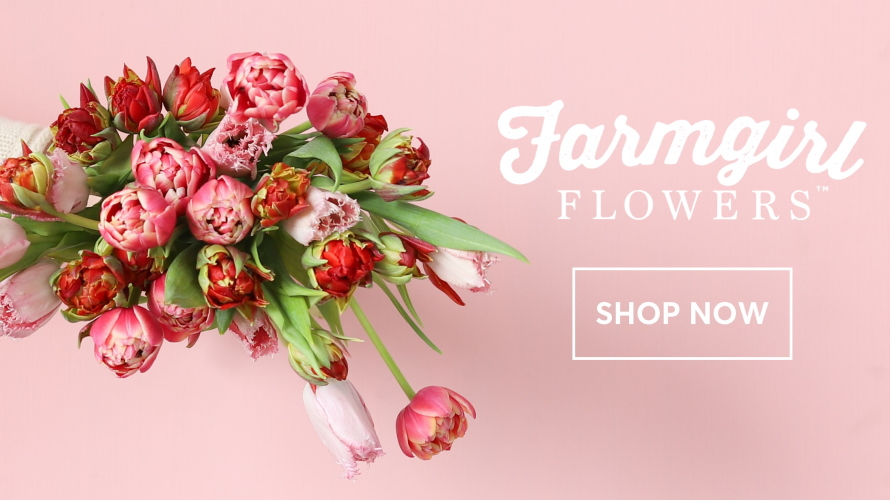
Source: Farmgirl Flowers
For a flower company like Farmgirl Flowers, Valentine’s Day is as make-or-break as the holiday season and a prime opportunity to build customer loyalty, drive sales, and increase revenue. The one big difference this time of year is that the customer base shifts significantly as compared to the holidays. According to Farmgirl’s Head of Communications, Kat Taylor, “For the rest of the year, it’s 80% women buying for other women. This time of year, it’s 80% men buying for women.”
During the Valentine’s Day season, Farmgirl shifts its messaging to appeal to men by highlighting what they know about their customers’ preferences. For example, men are often conditioned to think of ‘red roses’ for Valentine’s Day, but Farmgirl knows that their customer wants something different. Farmgirl’s ad messaging presents an alternative to ‘red roses’ that will appeal to both the buyer and the recipient.
Throughout the year, Farmgirl posts regularly to its social channels to drive organic growth. Then, by incorporating their most ‘liked’ posts and best-selling products into ads, they strategically spend their paid budget based on content they know will perform well.
#3 Resy Knows Customers Can’t Resist Free Pizza
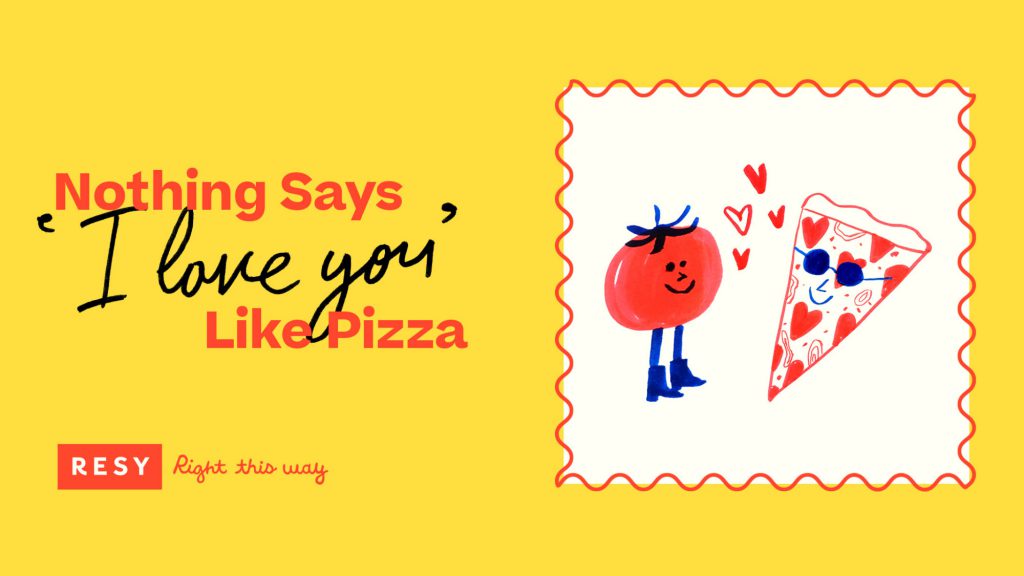
Source: Resy
The restaurant reservation startup Resy is increasingly giving its competitor, OpenTable, a run for their money. Resy appeals to a new generation of restaurant-goers by providing access to a high-end selection of establishments and taking a young, hip approach to marketing.
For Valentine’s Day, Resy offered app users “reservations” for a free pizza which would be made available for pickup on February 14th. As Resy explained on their blog, “since there is no greater expression of love than pizza, Resy is teaming up with three of America’s hottest pizzerias to offer up pies — our treat — on Valentine’s Day.”
The Resy Valentine’s Day campaign was posted to their Instagram and blog, and reservations opened on the app on Thursday, February 13th at 10am. The pizza giveaway appealed to their customer base, who are less likely to make a fancy dinner reservation to celebrate, and more likely to enjoy a pizza with friends on Valentine’s Day.
#4 Pepsi Offers a New Type of Engagement Ring
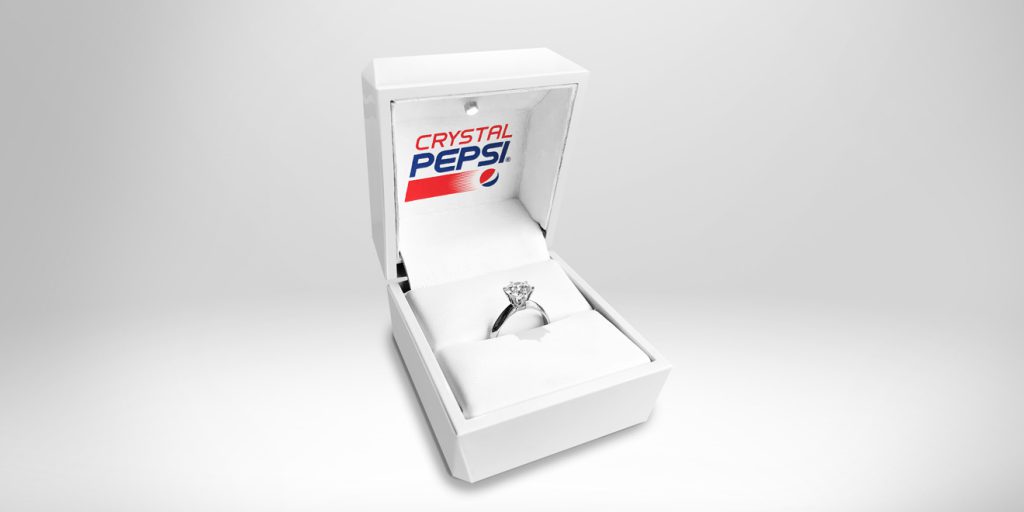
Source: Adweek
Timed with Valentine’s Day, Pepsi launched a social media contest asking fans to tweet their proposal ideas in exchange for a chance to win the soda brand’s lab-grown engagement ring. The ring, which presents an alternative to a natural diamond, features two key materials: a real diamond and Crystal Pepsi.
To promote the ring and social media contest for its Valentine’s day campaign Pepsi created a series of commercials that spoofed traditional engagement ring commercials. The brand will announce the winner the week of March 16 to coincide with National Proposal Day on March 20.
#5 Seagram’s Slides Into 7Up’s DMs
In a move that appears to be the next incarnation of brands fighting on Twitter, Seagram’s and 7Up teamed up for a joint Valentine’s Day campaign. The two brands leaned into their 60-year history as the two key ingredients in the popular “7 & 7” cocktail to talk about relationships and couples on Valentine’s Day 2020.
The Diageo-owned whiskey used Instagram and trending topics to create a cross-promotion with 7Up that reminded viewers what a great pair the two drink brands make. The ad uses humor and cultural trends to engage the audience (Seagram’s slid into 7Up’s Instagram DMs) without being gimmicky by partnering with a brand that has an authentic shared history.
#6 Stella Artois Encourages Customers to Savor Life & Love through Digital and Experiential
Belgian beer, Stella Artois, launched a Valentine’s Day campaign that encourages U.S. consumers to take more time to savor time with partners, family, and friends. Using the new tagline, “A Life Artois”, the beer brand encourages everyone to slow down and savor life with loved ones, playing on a major aspect of the European lifestyle that U.S. audiences find very aspirational.
The multi-channel campaign featured video ads that present an ode to the brand’s 600-year history, as well as an experiential element through the addition of a co-hosted event: on Feb. 13, the brand partnered with dating and friend-finding app Bumble to host the Stella Heartois Experience in Los Angeles, California.
#7 Mars Wrigley + Bumble Create a Candy Pop-Up
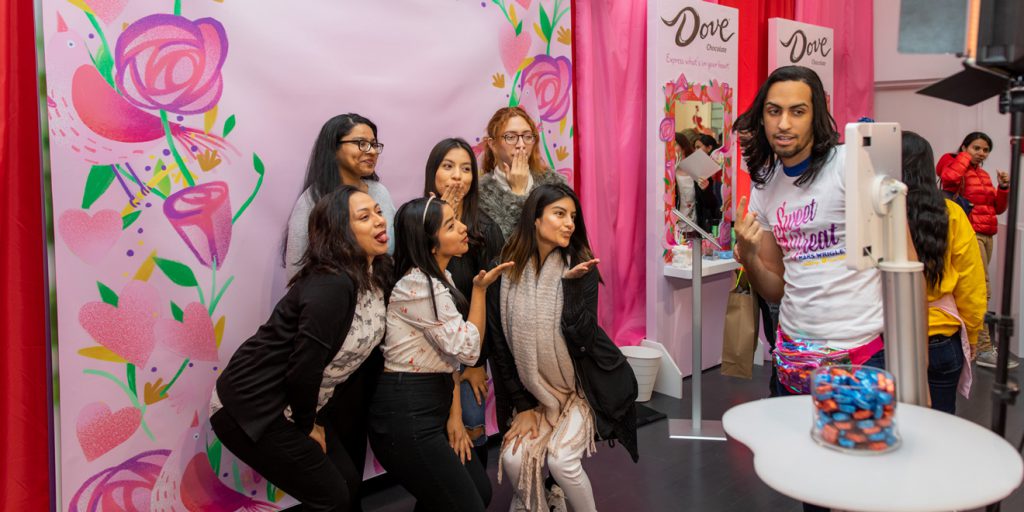
Source: Adweek
According to research conducted with Nielsen last year, there has been a 63% increase in Galentine’s Day celebrations since 2016. Additionally, the data revealed that 88% of consumers want to connect with new people.
Based on this data, Mars Wrigley partnered with Bumble to create a candy-themed Galentine’s Day pop-up in New York. Valentine’s Day continues to be an important holiday for candy brands, and the Mars’ pop-up capitalized on this fact in a fresher, more meaningful way by reaching modern consumers ahead of the holiday with an activation that tapped into the trend of Millennials celebrating the holiday with friends.
#8 Burger King’s Anti-Valentine’s Day
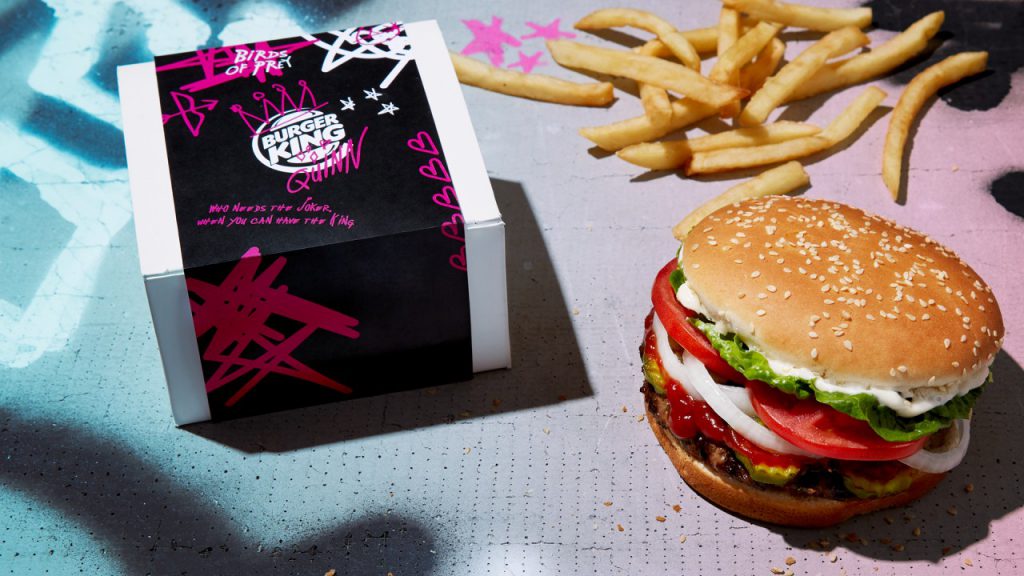
Source: BusinessWire
Statistics show that fewer people are celebrating Valentine’s Day this year: in 2009 72% of 18-34-year-olds planned to celebrate, while only half plan to celebrate this year. Burger King has a campaign for the other half.
The fast food chain partnered with Warner Bros. Pictures to create an anti-Valentine’s Day campaign alongside the February 7th release of the new film “Birds of Prey”, where Harley Quinn is broken up with by The Joker. On February 14th, consumers in New York City, Los Angeles, San Francisco, and Boston were promoted to bring a physical photo of their ex-flame and drop it in a “Birds of Prey”-themed breakup box in order to get a free Whopper.
By creating counter-programming, Burger King created an opportunity to stand out from romance-focused campaigns and get noticed by those that weren’t feeling the love this Valentine’s Day.
#9 Kraft Mac & Cheese Appeals to Parents’ Desire for Romance
Kraft conducted their own research in December and found that 86% of parents would like intimacy with their partner on Valentine’s Day, but a quarter of these people said their children would get in the way of a romantic evening.
Using this insight, Kraft created an engaging and relatable campaign that features a mother using Kraft’s Mac and Cheese to help plot her date night. The humorous campaign, which included video and a social media push, positions the quick and easy meal as an ally in helping parents get their kids, “fed and to bed.”
#10 Lunya Redefines “Good in Bed”
Sleepwear brand Lunya launched a Valentine’s Day campaign featuring real couples sharing intimate moments in the bedroom. These moments showcased the reality of what happens in a couples’ bed, including meditating, reading the newspaper, and playing with young children, as well as more romantic moments between partners.
Sleepwear and lingerie is often associated with Valentine’s Day, but the way it is marketed can often put unrealistic pressure on the women who wear the items. Lunya shifts the message by positioning its products as perfect for both romance and the more practical, intimacies that couples share. Using the catchy tagline “good in bed,” the sleepwear brand connects with the modern woman by redefining the idea of what takes place in bedrooms to include everyday activities.
We hope that these Valentine’s Day campaigns help spark a little inspiration for your next holiday-themed campaign. Tell us below if you really liked a Valentine’s Day campaign from this year, or what your brand did to connect with consumers on the holiday.
To learn more about the latest social media platforms, join us at one of our upcoming social media strategy conferences.
Looking for other great campaign ideas? Check out the top 8 viral social campaigns of the year.




